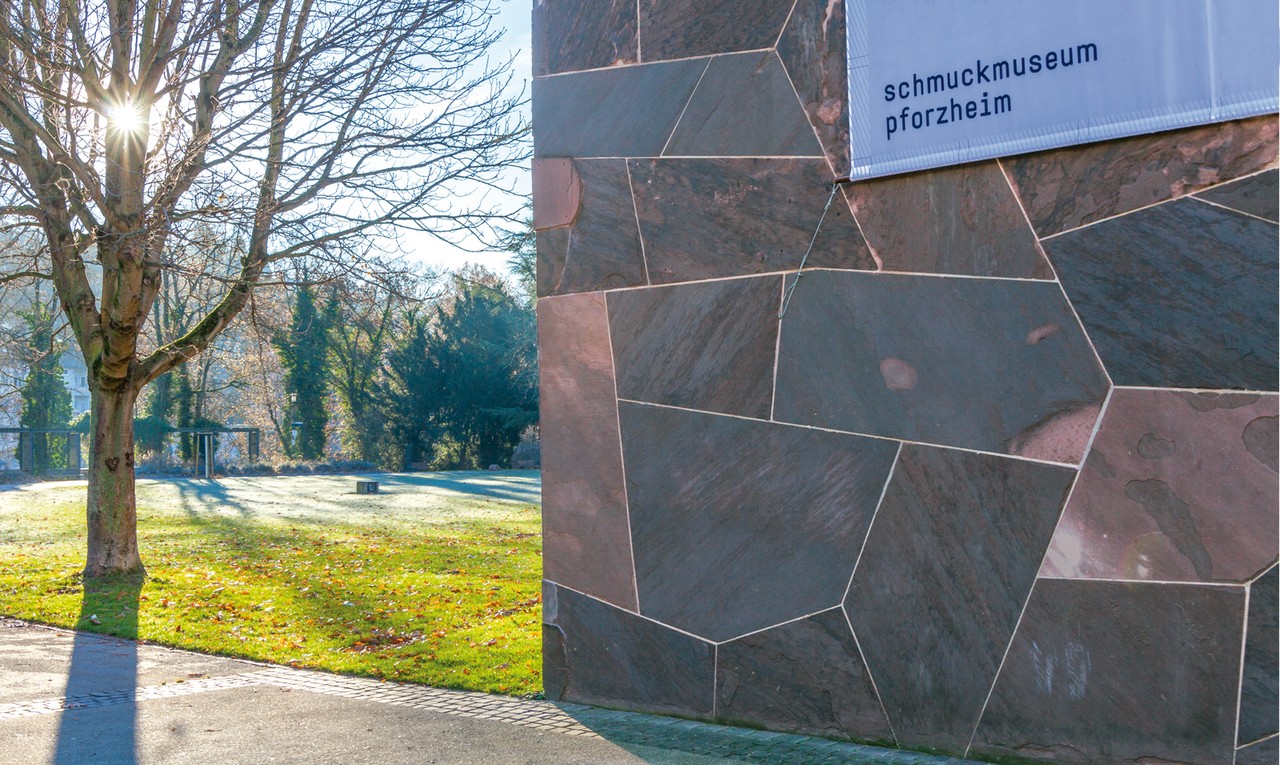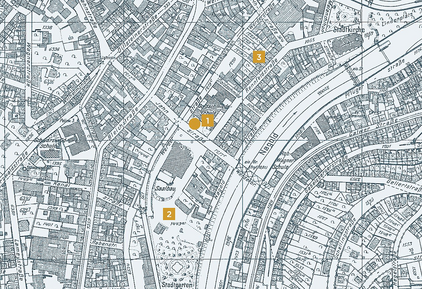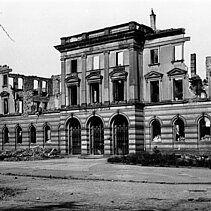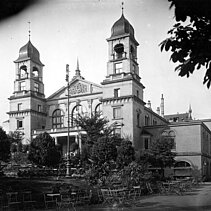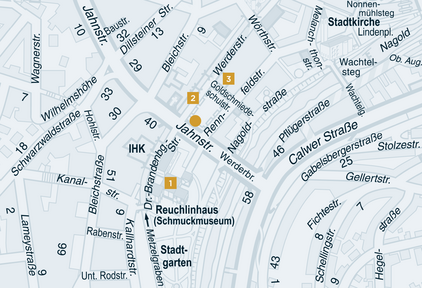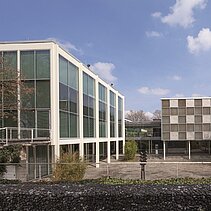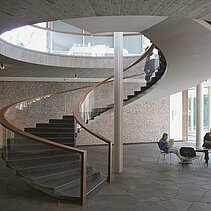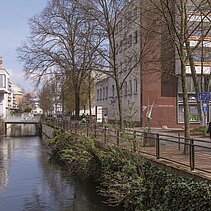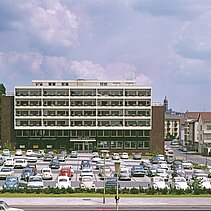Goldschmiedeschulplatz Before 1945
Places and Buildings Before 1945
[1] 1945
On 23rd February 1945, the "Goldschmiedeschule" (=school of goldsmiths) at "Jahnstraße" was hit by high-explosive bombs and firebombs. Considerable parts of the exterior walls survived up to breaking down in the post-war period.
[1] around 1940
In the years 1874 to 1877, the town built a representative school building in classical style at the "Jahnstraße" which was used up to 1892 in common by "Gewerbe- und Kunstgewerbeschule" (=vocational school and school of arts and crafts). After having moved the school of arts and crafts in 1911 to the "Holzgartenstraße", the reconstructed and extended school building served since 1912 as school of goldsmiths.
[2] around 1906
The "Stadtgarten" dates back to the year 1885, when the association of gardening redesigned the upper part of the former "Rennfeld" to a parc with flower beds, ornamental grass, fountain and a music pavilion. The hall buiding at the "Stadtgarten" represented the centre of cultural life. The splendid building was created from 1897 to 1900 in Neorenaissance-style according to plans of Alfons Kern who was town master mason of Pforzheim.
[3] 1643
For centuries, the "Rennfeld" (=racing field) was situated far from town between "Metzelgraben" and Nagold. On the lower "Rennfeld" Pforzheims citizens had their gardens, the upper "Rennfeld" was used as pasture and municipal fairground.
Goldschmiedeschulplatz After 1945
Places and Buildings After 1945
[1] 2016
The "Reuchlinhaus" at the "Stadtgarten", which was inaugurated in 1961, replaced the war-damaged hall building. As municipal centre of culture, it found worldwide attention and belongs to the outstanding performances of german post-war modern style. The architect Manfred Lehmbruck designed four cuboid buildings which surround a glaze entrance hall and present themselves in an attractive variation of different front materials.
[1] 2016
The spiral stair, made of steel, represents an eyecatcher of the entrance hall in the Reuchinhaus which leads in an elegant swing down to the basement. The Schmuckmuseum (=jewelry museum) shows a unique collection of jewels out of five centuries. After complete refurbishment of this historic building, the Reuchlinhaus accomodates since 2006 the Schmuckmuseum and the tradition-rich "Kunstverein" (=association of arts).
[2] 2016
The "Metzelgraben", first documented in 1412, is the last town stream that was created in medieval times. It branches off from the Nagold at the Nagold dam, accompanies "Stadtgarten" and "Werderstraße" and flows into the Enz at "Jörg-Ratgeb-Straße". In former times, it led additional water to the mills of the town, today it supplies together with the Enz the turbine power station at the "Auer Brücke".
[3] 1974
In 1964 to 1966, at "Goldschmiedeschulplatz" the new corporate building of Robert Schütt Witwe, an enterprise of gem cutting and jewel fabrication, was established with its office- and exhibition space as well as 68 accomodation units. The tradition-rich gem-cutting-enterprise Schütt was founded in 1890 in Pforzheim. In 1967, the company opened an exhibition of precious stones in the business rooms.

